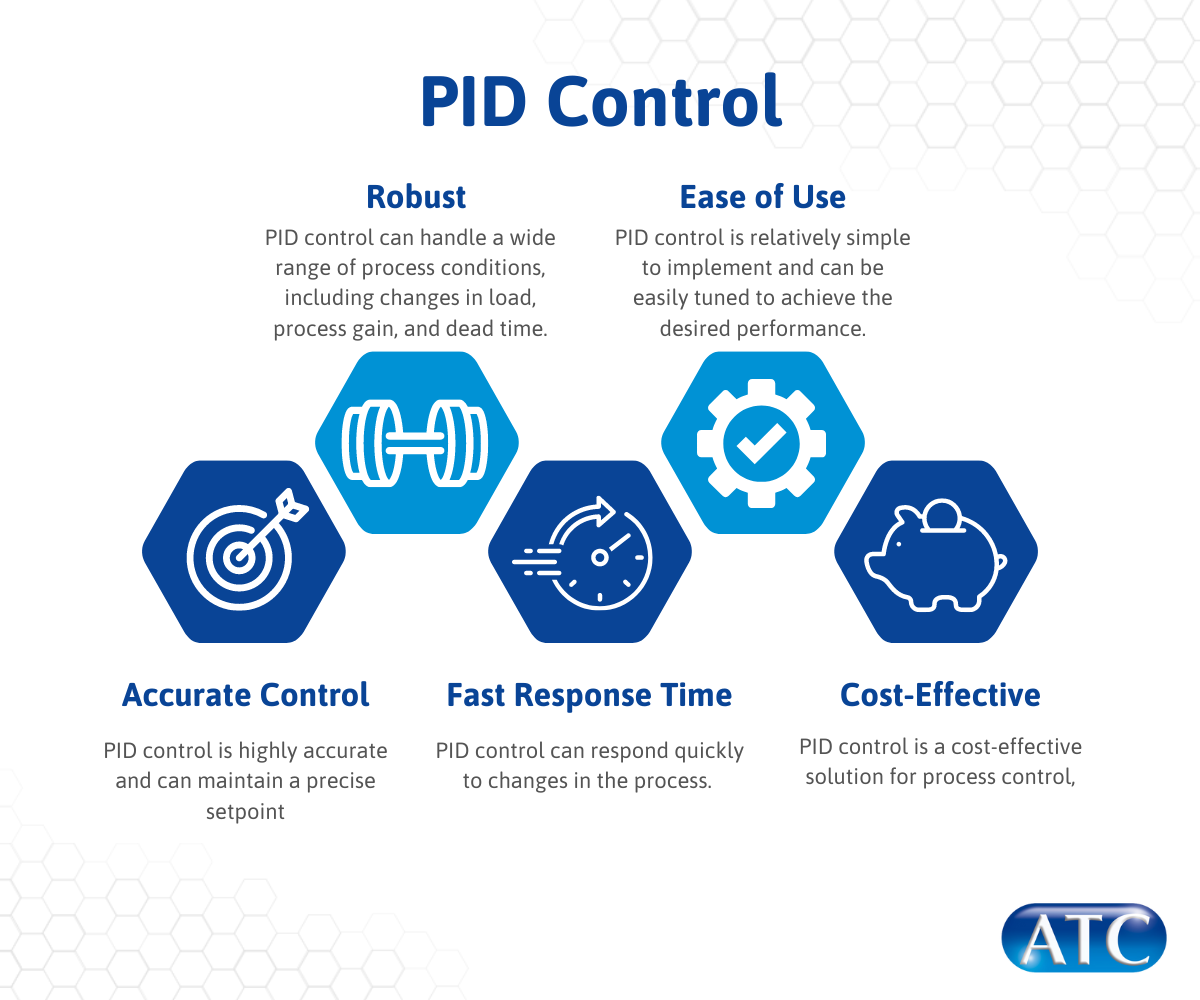Temperature control in process cooling typically involves
the use of a temperature control system.
Applied Thermal Control use Proportional-Integral-Derivative
(PID) control in the design of our recirculating chillers (aside from the
ecoMini). PID is a more advanced form of feedback control that uses a
mathematical algorithm to optimise temperature control. The algorithm takes
into account the current temperature, the rate of change in temperature, and
the accumulated error over time to determine the optimal cooling rate.
PID control is a closed-loop system that uses feedback from
the process being controlled to make adjustments to the control system. It
works by calculating the difference between the desired output (setpoint) and
the actual output and using this error information to make corrections to the
control system.
The correction is made up of three components:
This component of the correction is proportional
to the size of the error. If the error is large, the correction is also large.
If the error is small, so is the correction. The proportional control component
helps to bring the process variable towards the setpoint quickly.
This component of the correction is based on the
accumulated error over time. It helps to eliminate any persistent error that
may remain after the proportional control component has been applied.
This component of the correction is based on the
rate of change of the process variable. It helps to anticipate and prevent
overshoots in the process variable.
These components are combined and applied to the control
system to produce a correction that optimises the control of the process.
The benefits of using PID include:
- Accurate control - PID control is highly accurate and can maintain
a precise setpoint, even in the presence of disturbances or changes in the
process. This makes it ideal for applications where precise control is
required.
- Fast response time - PID control can respond
quickly to changes in the process, which is important in applications where
fast response times are required.
- Robustness - PID control is highly robust, and can handle a
wide range of process conditions, including changes in load, process gain, and
dead time. This makes it a good choice for applications where the process
conditions are subject to change.
- Ease of use - PID control is relatively simple to implement
and can be easily tuned to achieve the desired performance. This ease of use
makes it a popular choice for process control.
- Cost-effective - PID control is a cost-effective solution for
process control, especially when compared with more complex control systems.
